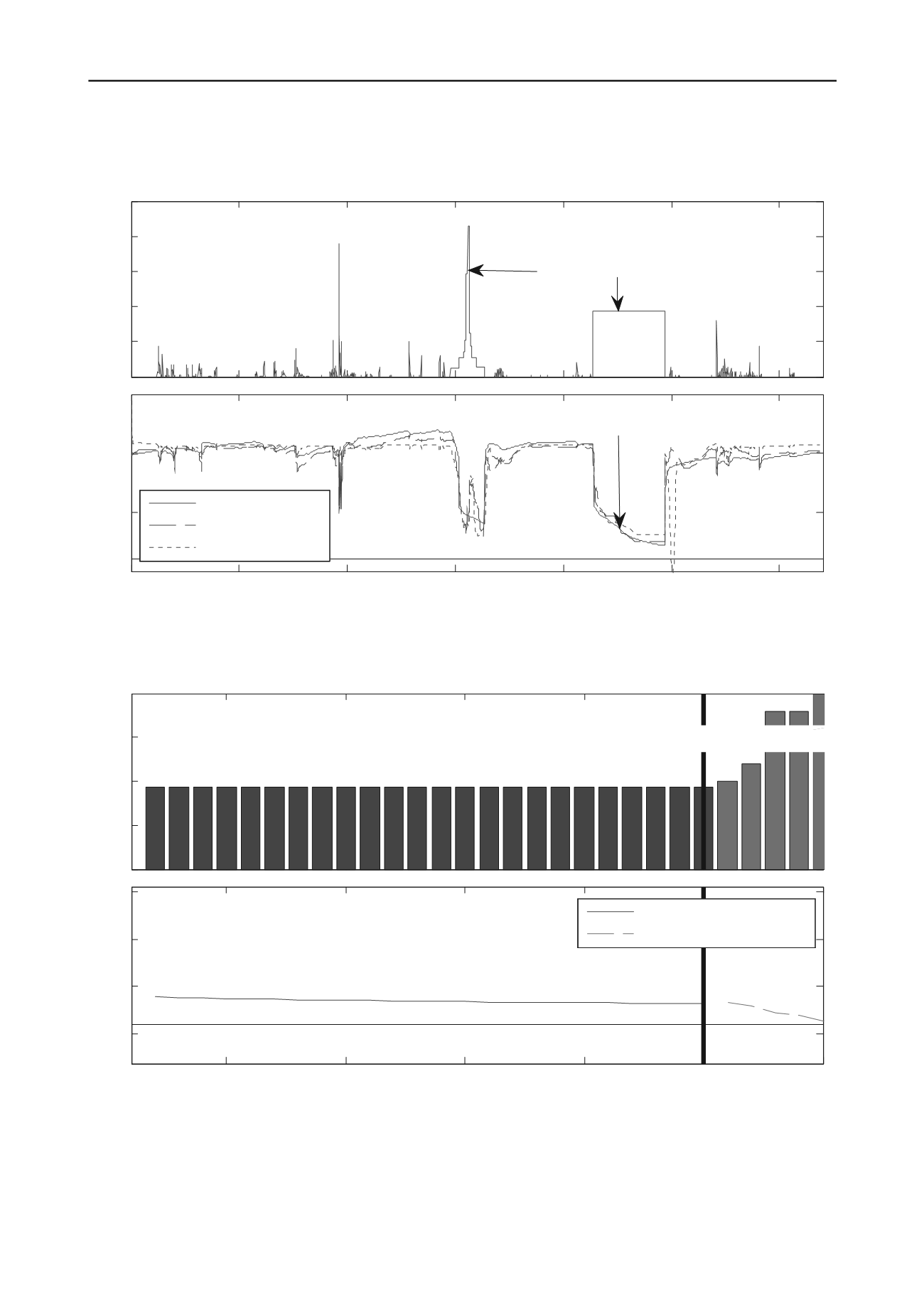
2187
Technical Committee 208 /
Comité technique 208
hours, using the rainfall forecast data as an input. Because the
ANN using the sensor data is more accurate than that using just
rainfall data, this predicted FOS using rainfall forecasts loses
accuracy over time. Thus, the predicted future FOS using
rainfall forecast data is set to equal the FOS predicted using
sensor data each time the sensor data is downloaded.
0
5
10
15
20
25
Rainfall (mm)
0
500
1000
1500
2000
2500
3000
0
5
10
15
FOS
Elapsed Time (Hours)
LEA
Using Sensors
Using Just Rainfall
Artificial rainfall event
Point at which data was entered into EWS example
(A)
(B)
Figure 1. (A) Rainfall events input into the FEM and (B) corresponding FOS obtained from LEA, the ANN using field measured data, and the ANN
using only rainfall events. The black line shows a FOS of unity (i.e. when failure will occur).
Figure 2. Example of the EWS in use. Elapsed time = 0 corresponds to the point in time at which the data was downloaded from the site (shown in
Figure 1). The upper graph (A) shows the rainfall recorded at the site, and the forecasted rainfall at the site. The lower graph (B) shows the predicted
FOS using the field data, and the predicted future FOS using the rainfall forecast. A FOS of unity is shown by thing black line.
0
5
10
15
20
Rainfall (mm)
-20
-15
-10
-5
0
5
0
5
10
15
FOS
Time (Hours)
Predicted using field data
Predicted using forecast
(A)
(B)
Measured rainfall
Forecasted rainfall


